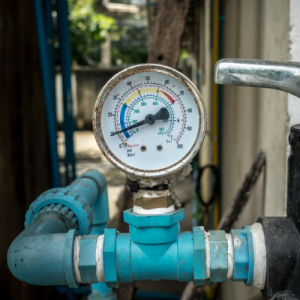The Comprehensive Instruction to Resolving Low Water Pressure in Your Home
WebsiteThis post down below in relation to Dealing with Low Water Pressure in Your Home is pretty much informative. Don't miss it.

Low tide stress in your home can be a discouraging trouble, influencing every little thing from showering to washing recipes. If you're experiencing weak water flow, there are several feasible causes and options to check out. In this overview, we'll go over typical factors for low tide pressure and practical actions to resolve the concern properly.
Introduction to Low Water Pressure
Low water pressure occurs when the circulation of water from your faucets, showers, and other components is weaker than normal. This can make daily jobs more challenging and less efficient. Understanding the root causes of low water stress is important to discovering the right service.
Usual Sources Of Low Tide Pressure
Faulty Pressure Regulators
Pressure regulators are accountable for keeping consistent water pressure in your home. If they malfunction, it can result in low tide pressure or uneven flow throughout your home.
Municipal Water System Issues
In some cases, the trouble lies outside your home. Metropolitan water system issues, such as main line leaks or maintenance work, can temporarily decrease water stress in your location.
Pipe Obstructions
Over time, pipes can come to be blocked with natural resource, debris, or particles, restricting the flow of water. This is a common issue in older homes with galvanized steel pipelines.
Deterioration
Corrosion within pipelines can lead to leakages and minimized water pressure. Corrosion build-up can tighten water circulation, specifically in aging plumbing systems.
Just How to Detect Low Water Stress
Inspecting Pipes
Inspect visible pipelines for signs of leakages, deterioration, or clogs. Focus on any kind of unusual sounds, such as banging or rattling pipelines, which could show problems within the plumbing system.
Consulting with a Plumber
If you're unable to determine the reason for low tide stress, consider working with a professional plumber to perform a detailed inspection. They can determine underlying issues and recommend ideal remedies.
Inspecting Faucets and Components
Begin by testing the water stress at various faucets and fixtures throughout your home. If the issue is separated to details areas, it may suggest localized problems.
Do It Yourself Solutions to Take Care Of Low Tide Stress
Flushing Water Heater
Debris build-up in the hot water heater can limit circulation and reduce effectiveness. Flushing the container occasionally aids get rid of sediment and preserve optimal performance.
Checking Stress Regulatory Authority
Ensure that the pressure regulatory authority is working appropriately. Changing or replacing the regulatory authority can help restore proper water pressure throughout your home.
Cleaning Up Aerators and Showerheads
Mineral deposits can accumulate in aerators and showerheads, minimizing water flow. Remove and cleanse these elements frequently to improve water pressure.
Clearing Clogs in Pipeline
For minor obstructions, attempt using a plumbing snake or chemical drain cleaner to clear obstructions in pipes. Beware when making use of chemicals and adhere to safety standards.
When to Call a Professional Plumber
If do it yourself efforts stop working to settle the concern or if you suspect considerable plumbing troubles, it's ideal to look for support from an accredited plumber. They have the experience and tools to address complicated problems securely and properly.
Preventive Measures to Keep Water Pressure
Installing a Pressure Booster
Take into consideration mounting a pressure booster pump to enhance water pressure in areas with consistently reduced flow. This can be particularly useful for multi-story homes or homes with high-demand components.
Surveillance Water Usage
Bear in mind water usage routines and avoid ill-using the plumbing system. Basic adjustments, such as incredible showers and washing loads, can aid preserve ample water pressure.
Regular Upkeep
Arrange routine maintenance for your plumbing system to stop concerns such as deterioration, leaks, and blockages. Resolving minor troubles early can help stay clear of more substantial repairs later on.
Verdict
Taking care of low tide pressure can be aggravating, but recognizing the underlying reasons and executing appropriate remedies can restore optimum flow throughout your home. Whether it's cleaning up aerators, evaluating pipelines, or talking to a plumber, taking positive steps can ensure a steady supply of water for your everyday requirements.
How to Fix Low Water Pressure In Your Home
Municipal Water Supply Issues
Scheduled maintenance, high demand, and water main breaks are all potential causes for low water pressure within a city or county’s water lines. While there’s not much you can do to personally fix a problem with your city or county’s water supply system, you can play a big role in documenting the issue and alerting those who can.
How to fix it:
Ask your neighbors if they are experiencing any issues with low water pressure. If multiple homes are affected, it’s likely related to the city’s water line. Contact the local Water Authority to see if there is any maintenance taking place that might be affecting your supply. Also let them know of your specific issues. If other homeowners report the same issues, they’ll know that there could be a larger issue to look into. Faulty Fixtures
A damaged or clogged shower head, faucet or appliance is the first thing we’d suggest checking, especially if low water pressure appears to be isolated to a specific area of your home.
How to fix it:
First, turn off the main water supply to your home. Check the affected appliances for build-up or debris. In the case of a faucet, you can simply unscrew the aerator at the tip of the faucet. Showerheads should be fully detached from the water pipe. While the appliances are detached, you may want to check the water supply to determine if the fixtures were in fact the issue. To clean, soak the showerhead or aerator in vinegar and brush off any visible debris. Reattach the fixtures and check the water pressure again. If it is still low, there is likely a deeper issue at hand, which can be determined by a professional plumber. Pipe Obstructions
Mineral deposits, rust or other debris within water pipes can lead to blockages or corrosion over time.
How to fix it:
When you think of a clog, you probably think of a drain clog. While there are many DIY solutions to clearing a drain, clogs in a water pipe will almost always require the help of a professional plumber. A plumber will be able to locate the affected pipe and clean out any debris or mineral deposit buildup. In severe cases, the pipe may need to be replaced. Your plumber might also recommend a water softening system to remove the minerals from your home’s water supply that can contribute to pipe blockages over time.
Plumbing Leak
Undetected water line leaks can divert water away from your residential pipes, reducing the water pressure in your fixtures.
How to fix it:
Check your water meter by turning off all water sources and monitoring the meter for any movement, which could be a clear indicator of a potential leak. Check all visible pipes for signs of leaking, including water stains, active dripping or damp spots around the pipe. Inspect fixtures, including faucets and showerheads, for any drips. Test the pressure but recording the pressure with the main water valve shut off. Leave off for a few hours and test again. A significant drop in pressure is a clear sign of a leak. https://kiddcoplumbing.com/plumbing-blog/how-to-fix-low-water-pressure/

I ran across that piece of writing on 10 Reasons for Low Water Pressure in Your House when browsing on the internet. Are you aware of another person who is looking into 4 Ways to Troubleshoot Low Water Pressure? Feel free to promote it. I truly appreciate reading our article about 9 Reasons for Low Water Pressure in Your House.
At This Website